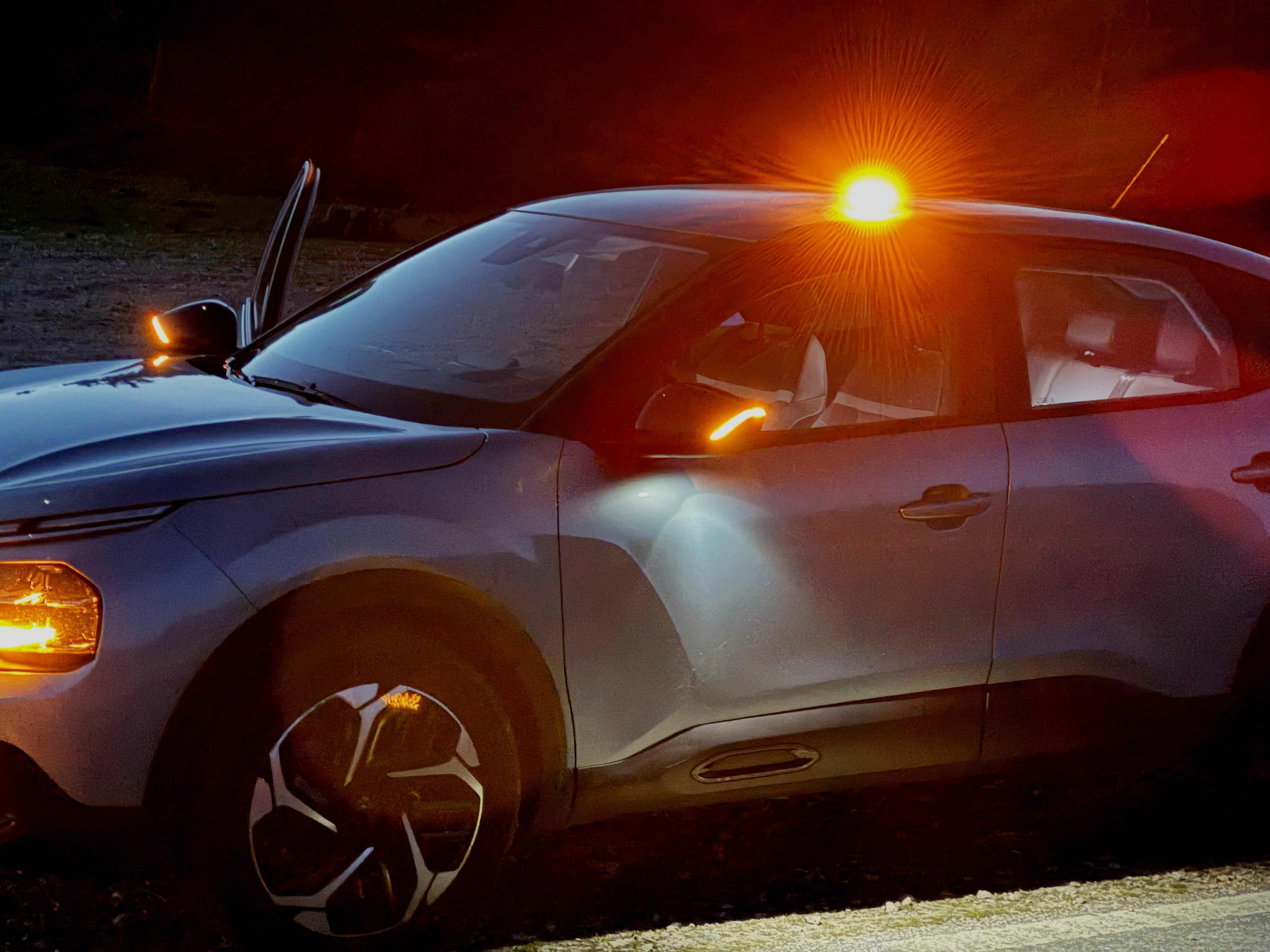What are passive safety systems?
Passive safety systems are all those elements designed to minimize the consequences of an accident once it has occurred. Unlike active safety systems, which aim to prevent collisions (such as ABS or stability control), passive safety systems protect occupants and other road users once an impact is unavoidable .
Their purpose is clear: to save lives or reduce the severity of injuries . Therefore, their presence in modern vehicles is not only recommended, but in many cases, required by law.
What do passive safety systems include?
Passive safety systems include multiple components that act together during an accident. They range from the most visible, such as the seat belt, to more recent ones, such as connected V16 hazard lights , which enhance vehicle visibility in the event of a breakdown or accident.
Seat belts
The seatbelt is the most basic and essential passive element. Its function is to keep the occupant in their seat during a collision and prevent them from being ejected. It is mandatory in all seating positions and reduces the risk of death by up to 50%.
Airbags and pretensioners
The airbag deploys within milliseconds of an impact to cushion the impact and prevent the body from colliding with hard elements of the car. Pretensioners , on the other hand, automatically tighten the seat belt in the event of an accident to reduce body displacement.
Headrest
Although sometimes overlooked, head restraints serve a key function: preventing whiplash in rear-end collisions. To work properly, they must be at the proper height (aligned with the back of the head).
Deformable body
Today's vehicles are designed with controlled crumple zones that absorb some of the impact energy. This protects the passenger compartment and reduces the force reaching the occupants. It's an invisible, but vital, engineering feat.
V16 beacons and light signals
In emergency situations, visibility is everything. V16 beacons like Help Flash IoT+ can be attached to the car's roof in seconds and emit a high-intensity flashing light . Connected models also automatically send the vehicle's location to the DGT (Directorate General of Traffic) to warn other drivers of the incident.
The v16 car emergency light is part of passive safety , as it does not prevent breakdowns, but protects occupants by making the stopped vehicle visible without anyone having to walk on the shoulder .
For this reason, connected emergency lights will be mandatory in Spain starting January 1, 2026.
Importance of passive systems in road safety
Without passive safety systems, a minor accident could be fatal. In an environment where collision avoidance isn't always possible, these systems make the difference between a scare and a tragedy .
They are especially important in:
-
Rear-end collisions (rear or frontal).
-
Overturns or road exits.
-
Nighttime or low visibility accidents .
And they don't just protect vehicle occupants; they can also protect pedestrians and motorcyclists , as is the case with frontal impact absorption systems.
Are V16 beacons passive or active safety?
Good question. V16 beacons are somewhere in between active and passive safety:
-
They are passive because their function is to warn other drivers after a breakdown or accident , increasing the visibility of the stopped car.
-
But some models such as Help Flash IoT , which automatically connect to the DGT , also have an active dimension, contributing to real-time traffic management.
For this reason, more and more experts consider connected V16s to be a new standard in road safety , capable of combining the best of both worlds. For now, Spain has already passed legislation in favor of connected models, which will soon be mandatory in our country.
Help Flash as an example of innovation in passive road safety
Help Flash is a clear example of how a seemingly simple element can revolutionize road safety. Unlike traditional triangles (which force you to get out of the car and walk on the shoulder, with the resulting risk of being hit by a car), Help Flash can be installed without leaving the vehicle , in seconds, and makes you visible from more than 1 km away.
With connected beacons, such as Help Flash IoT and Help Flash IoT , your car is automatically geolocated by the DGT. These beacons comply with the regulations that will be mandatory starting in 2026 in the new legal standard for emergency signaling.
In addition, our beacons are compatible with the myIncidence roadside assistance app, improving emergency services response and reducing the risk of collisions.






